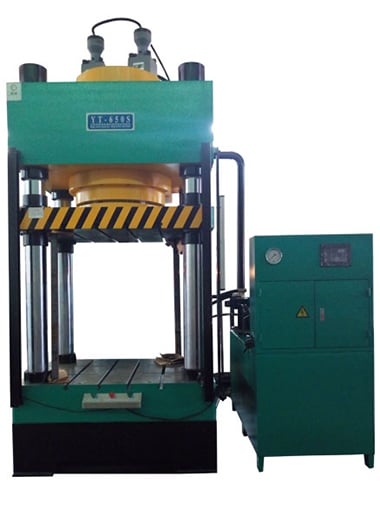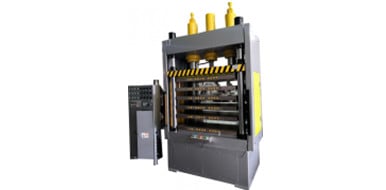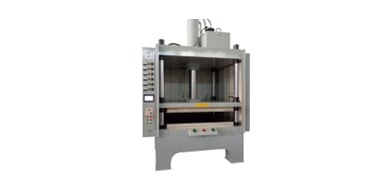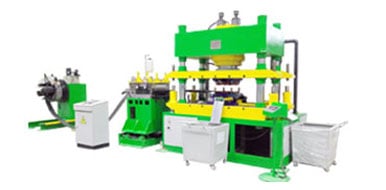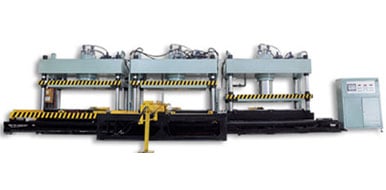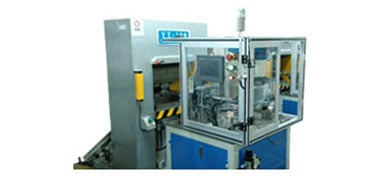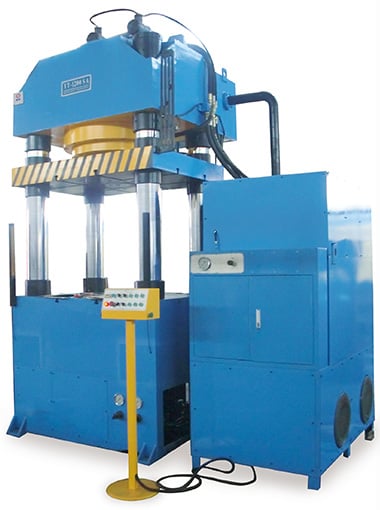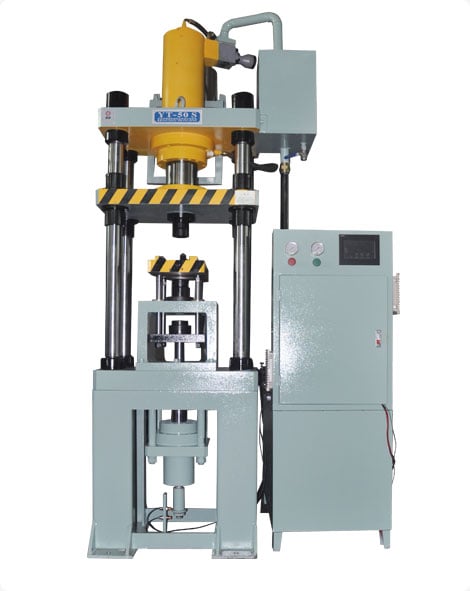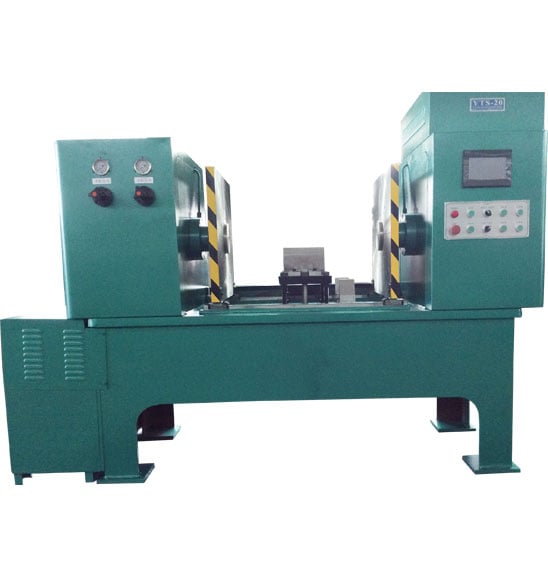How to Make Hydraulic Press Brake
time:2023-06-30 views:(点击 1,020 次)
Hydraulic press brakes are pieces of machinery used to bend metal sheet into different shapes and sizes. An integral component of any manufacturing operation, they require regular servicing in order to function at their best performance.
Punch and die arrangements on press brakes have an enormous effect on the quality of finished products. There are different shapes and sizes of punch and die available to accommodate different bend angles and radii requirements.
Basics
Press brakes are used to bend metal sheets into various shapes. They can also be used for shearing metal and punching holes into it. Press brakes consist of five components: frame, ram, controller, punch & die, backgauge and an oil cylinder. The frame serves as the foundation of this machine and should be constructed of heavy-duty steel to withstand any forces generated during bending. The ram is the moving part attached to the punch that moves up and down to bend metal sheets. The controller of a press brake is used to set and alter its bending dimensions and angles. Punches and dies are the tools that shape metal sheets into various bend angles or radii; backgauges help align metal sheets accurately on rams; oil cylinders generate the force required to bend metal sheet; the amount of pressure applied through tonnage determines what metals the press brake can bend.
There are various kinds of press brakes, including mechanical, hydraulic and electric models. Your choice will depend on your business needs; for general sheet metal bending you should consider purchasing a hydraulic press brake as this type provides high levels of accuracy that's ideal for large production runs.
If you need a press brake that can handle more complex workpieces, electric or servo press brakes may be ideal. They feature fast, precise bending as well as being energy efficient with lower maintenance needs than hydraulic presses.
Design
Design of a hydraulic press brake is key to its effective use. It must be constructed from heavy-duty materials capable of producing high pressures, accommodate multiple workpieces and angles and be easy to operate for accurate measurements of workpieces as well as perform various functions like bending, straightening, punching and shearing.
Hydraulic press brakes contain four core components: bed, frame, ram and backgauge. The backgauge positions metal sheets accurately for bending, and can be adjusted to accommodate different bending dimensions. An oil cylinder uses hydraulic fluid to power ram which generates force needed by hydraulic system which in turn is controlled via controller to generate desired workpiece dimensions and angles.
Modern press brakes typically feature 12 or more programmable axes of movement and can calculate optimal settings based on material type, thickness, and desired results. This saves time and ensures precise bending. Moreover, some machines create visual representations of end results to assist the operator during setup. It is essential to understand how each metal bends differently before operating a press brake - for instance some metals may only bend with coining or bottom bending techniques while other may need air bending instead.
Modern press brakes are engineered to be energy-efficient, with lower power consumption and hydraulic fluid leakage rates, reduced noise pollution, and provide safer working environments for workers.
Materials
Building your press brake requires certain materials. These include the workbench, ram, punch and dies and drive mechanism. The workbench serves as a platform for supporting the ram which bends sheet metal into various shapes by pushing against dies; hydraulic cylinders control its position so you can control its force according to your needs.
Punch and dies are constructed of high-strength materials such as hardened steel to withstand the extreme pressure and forces applied by our machines. They come in various shapes and sizes to meet your specific requirements, from straight punches for simple radii to gooseneck punches with acute angle bends - these key components to our bending process will determine your results!
Other considerations when selecting a press brake include the type and thickness of metal being worked with as well as size of flanges that will need bending. There are charts available online which indicate how much tonnage will be necessary for specific projects; this can help select an ideal ram for you.
As each will require different amounts of force, air bending uses less and is best used on smaller projects while bottom bending works best on larger pieces with thicker walls. Furthermore, V-die size should also be taken into consideration as its width must at least eight times greater than plate thickness to bend efficiently.
Tools
Tools necessary for making a hydraulic press brake include a punch and die made from materials with high hardness to reduce damage during bending processes. Furthermore, an upper die or punch is designed so it can produce different angles and shapes of workpieces; this enables you to reuse one tool for multiple uses, saving money by not purchasing additional ones.
Lower dies play an integral part in bending metal sheets successfully, so they should be made of materials with high tensile strength to withstand weight and pressure from ram without distorting. Selecting an ideal die size will determine how far ram can bend metal sheets.
Additionally, when operating a hydraulic machine you should take into account what control system will be used. This is important as different jobs require different tonnages and bending lengths. You have two choices for controlling systems; NC (Numeric Controlled) or CNC (Computer Numeric Controlled). CNC provides more advanced features which can help achieve superior bending results.
At last, you must select an appropriate hydraulic power unit for your press brake. Depending on what material you will be working with, either hydraulics or electromechanics might be best; depending on their accuracy and energy consumption. Hydraulic systems offer higher precision than their electromechanic counterparts while using 70% less electricity. In addition, hydraulic systems offer more precise motion control with reduced vibrations for heavy-duty applications while electromechanical units might work better for softer materials.
Installation
As soon as a press brake is first installed, it is crucial that its components are correctly seated and aligned for optimal results from its machine. Furthermore, keeping its tooling clean and lubricated is equally essential in terms of reducing setup times and increasing accuracy.
Hydraulic press brakes rely on their power plant or hydraulic pump as one of their most essential elements. The hydraulic pump generates power that energizes hydraulic fluid to conduct bending operations; it may be powered by either an electric motor or diesel engine.
Make sure your press brake has enough capacity for bending material you plan to work with by using either a calculator or consulting the operating manual of the machine. A typical chart will indicate this; maximum bending force of any material for which this formula holds is equal to square root of machine tonnage multiplied by v die opening size multiplied.
No matter if your press brake is CNC or manual, having the manual on hand is always wise and can save a great deal of time when used to troubleshoot issues.
As part of press brake maintenance, it is also crucial to regularly wipe down back gauges, guides and surfaces with a dry cloth to eliminate dirt accumulation that could prevent proper functioning of a press brake. Furthermore, changing out filters on hydraulic pumps periodically is also highly recommended.
Link to this article: https://www.ihydraulicpress.com/nsn/3796.html
Hot Articles
-
How to Make a Hydraulic Shop Press
Hydraulic presses provide the ideal way to exert high levels of pressure in any shop environment, whether that means stamping parts or pressing be……
-
How Can Make a Small Hydraulic Hot Press?
Hydraulic presses offer powerful force that cannot be rivaled by other material shaping techniques. Hydraulic presses come in all shapes and sizes……
-
How to Make an Air Over Hydraulic Press
An air over hydraulic press, also known as hydro pneumatic press, offers an economical and energy efficient alternative to full hydraulic presses.……
-
How Much Pressure Can a Hydraulic Press Apply?
Hydraulic presses use pressured liquid to force materials together, making them an incredibly flexible way of shaping metals or producing medicina……
-
How to Make a Knife Using a Hydraulic Press
Hydraulic presses can generate immense force without needing complex machinery and are also energy efficient. Hydraulic Press Channel’s craz……
-
What Can I Make With a Hydraulic Press?
Just like children enjoy squashing play-doh, hydraulic presses allow users to compress and shape metal with incredible ease. They are used across nu……
-
How to Make a Hydraulic Press For Forging
Hydraulic presses are essential tools for shaping and forming metal. Their force far surpasses that generated using mechanical hammer-and-anvil me……
-
How to Make a Hydraulic Cider Press
Hydraulic presses are an efficient and dependable method for extracting large volumes of juice quickly and reliably, and should always be the go-t……
Latest News
-
How to Make a Powerful Hydraulic Press
Hydraulic presses are powerful machines capable of crushing anything placed inside them. In this article, we’ll look at how they operate, vari……
-
How Much Does Hydraulic Press Channel Make on YouTube?
Lauri Vuohensilta and Anni began uploading videos of themselves crushing objects onto YouTube in 2015, quickly becoming popular after one video usin……
-
How to Make a Hydraulic Press Model
Hydraulic presses use fluid pressure to compress, assemble, draw, punch and stamp materials for various applications. They rely on Pascal’s ……
-
How to Make a Small Hydraulic Press
If you are creating many small metal parts manually, a hydraulic press can save a great deal of time. Check out this video and learn how to build ……
-
How to Make Almond Oil With a Hydraulic Press
Almond oil contains powerful antifungal properties, making it an excellent way to treat fungal infections like athlete’s foot. Furthermore, ……
-
How to Make Your Own Hydraulic Jewelry Press
Hydraulic jewelry presses are invaluable tools in any metalsmith’s studio, consisting of a strong steel frame with an attached hydraulic ram……
-
How to Make Dies For Hydraulic Press
Hydraulic presses are powerful industrial tools that exert considerable pressure. Used for forging, clinching, molding, blanking, punching, deep dra……
-
How Much Force Does a Hydraulic Press Produce?
Hydraulic presses are one of the most versatile assembly technologies. Utilizing Pascal’s Law, they use pressure from their Plunger and Ram cy……







